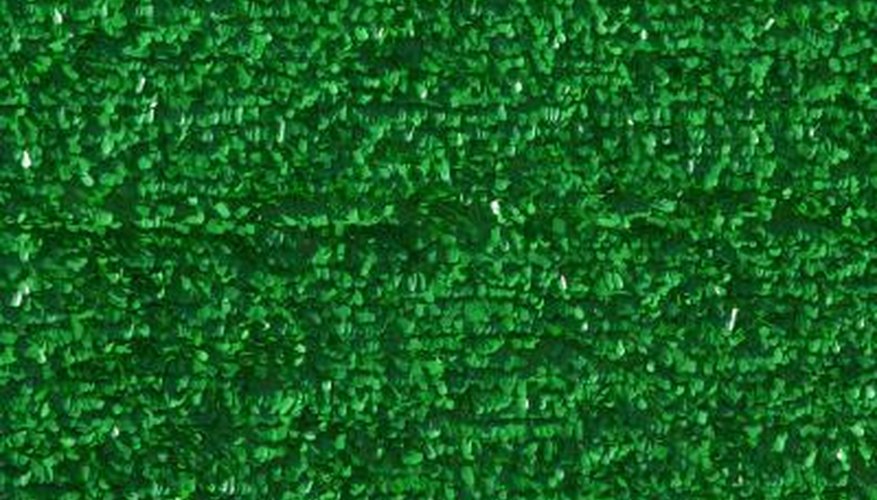Impervious to drought, harsh weather and heavy foot traffic, artificial turf is a grass alternative in sports arenas, golf courses and lawns all over the world. Some homeowners with pets prefer artificial turf to grass. This synthetic material provides the appearance of a lush, green lawn without having to perform typical lawn maintenance. While artificial turf does not require watering or cutting, it is not entirely maintenance-free. Artificial turf must be cleaned and disinfected regularly to kill microbes that decompose naturally on real grass.
- Impervious to drought, harsh weather and heavy foot traffic, artificial turf is a grass alternative in sports arenas, golf courses and lawns all over the world.
- Artificial turf must be cleaned and disinfected regularly to kill microbes that decompose naturally on real grass.
Brush or use a non-metal rake on the artificial turf to remove any visible debris.
Apply a commercial antimicrobial turf cleaner according to manufacturer's directions.
Alternatively, you can apply a bleach solution to kill mould and germs. Mix together a solution of 1 cup of chlorine bleach and a gallon of water.
Pour the solution into the pressurised spray bottle with a hand wand attachment and apply it to the artificial turf in a side-to-side sweeping motion. Rinse well with clear water as any leftover bleach can irritate your skin as well as a pet's paws.
TIP
Regularly irrigate your artificial turf with clear water. For pet stains, use an enzymatic cleaner from a pet supply store.
WARNING
Avoid using foaming or soapy cleaners on artificial turf, as they can leave behind residue that attracts dust and dirt.
